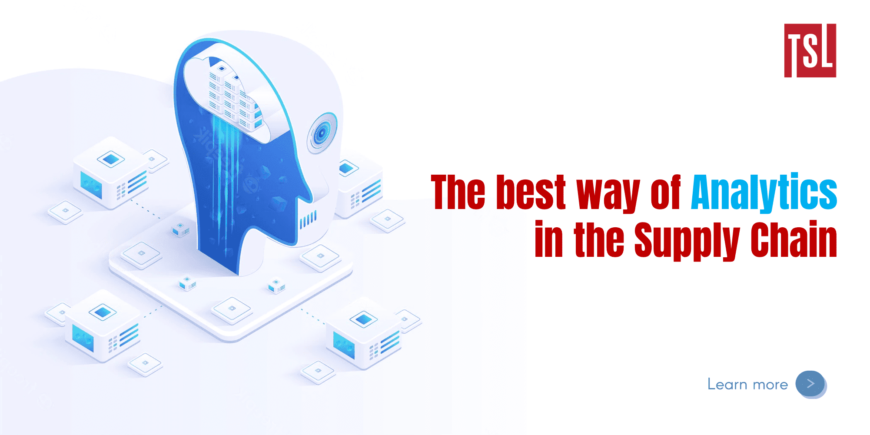The best way to Analytics of the Supply Chain
Executives are focused on delivering new products to market on time and within designated margins. This is particularly challenging for manufacturers that rely heavily on suppliers. Margins keep getting tighter, and customer demands and expectations continue to grow. Failure to meet goals and commitments has a long-term impact on a company’s reputation and viability. The mass of real-time data being generated throughout the supply chain holds the promise of new insights, and analytics can help optimize both internal resources and the upstream supply chain.
The Value of Analytics
Analytics can help organizations gain a clearer, more holistic view of their launch process, from program launch risk to cost erosions. In a real-world operation, practical applications of analytics for better, faster decision making include:
- Making better sourcing decisions based on supplier performance.
- Identifying supply chain risk in current and future production.
- Minimizing future disruptions by analyzing root causes of past events.
- Discovering product development opportunities based on order data.
- Understanding how product design changes impact production costs.
Analytics not only enables companies to streamline process efficiencies, but also ensures things do not fall between the cracks. However, real-time, standardized data from all of the company’s data sources must be available – otherwise, the insights gleaned from the analytics brought to the table will never be trusted. Unreliable data provides unreliable results.
Getting Started: The Data Is The Challenge
Before endeavoring to roll out an analytics solution, organizations need to understand that the value of analytics is only as good as the data feeding the system. With traditional analytics platforms, each data source must be defined in advance, and all sources of information must be standardized. In particular, standardizing data can be a roadblock for large organizations with multiple ERP systems, where the same part could potentially have different part numbers in each system.
Further, legacy data warehouses can make it more complicated to get complete, trustworthy results because it is tremendously time-consuming and difficult to integrate new and evolving information sources. New analytics tools leverage the data lake model, which stores relational data from business applications as well as non-relational/unstructured data that was previously siloed or unaccounted for entirely. A data lake equips organizations to get the most out of their analytics by providing a data environment that facilitates not just descriptive but predictive and prescriptive analytics as well.
Leveraging Analytics To Power Proactive Decisions
Predictive analytics applies machine learning algorithms against historical trends and events in order to model and predict future results. Prescriptive analytics leverages machine learning to then take the predictive analytics to the next level, suggesting decision options that can mitigate future risk, at the time business decisions are being made. Analytics promotes transparency and cross-functional collaboration by creating highly visible, shareable forecasts and recommendations. This helps teams across an organization — as well as its suppliers — to operate from a data-driven place for planning and decision making.
What To Look For In An Analytics Solution
As an organization explores available analytics solutions, there are a few key features to keep in mind: integration of data sources, native machine learning capabilities and real-time analytics.
Integration of data sources: To be scalable and ensure long-term viability, the system should have the ability to integrate all of an organization’s disparate systems to create a single source of information. It is essential that companies analyze all available data sources to make more intelligent business decisions, improve their forecasting, deploy more precise product launch tracking, and learn and improve from analysis of product defects.
Native machine learning capabilities: Further, a solution that includes a data lake equipped with machine learning — rather than requiring a third-party analytics solution — will enable predictive and prescriptive analytics from day one.
Real-time analytics: Lastly, it’s critical that an analytics solution have the ability to update data in real time. With near-real-time visibility into the ever-growing sources of structured and unstructured data via the data lake, companies can leverage machine learning to anticipate, mitigate and respond to supplier and delivery issues before they disrupt production.
An analytics solution is a significant investment, but it can often pay for itself by enabling businesses to build more transparent and resilient organizations while minimizing the risk of crises that could have disastrous effects on reputation and the bottom line.
Blue Yonder’s supply chain smart solutions ecosystem fulfills the requirements of an analytics solution!
Blue Yonder’s Luminate Platform gives global brands the ability to utilize the full power of their data to integrate, process and take action at scale across their supply chains. Blue Yonder’s Luminate Platform provides a single end-to-end view of your business to plan proactively and deliver world-class experiences to your customers.








